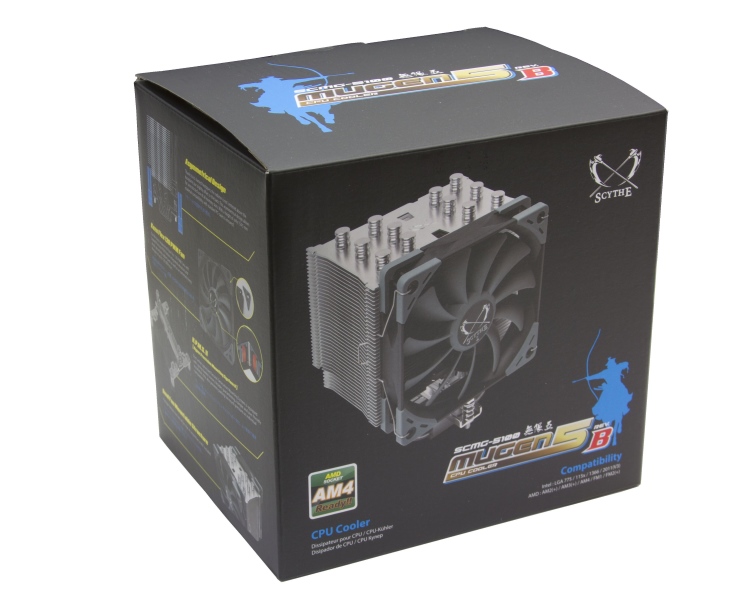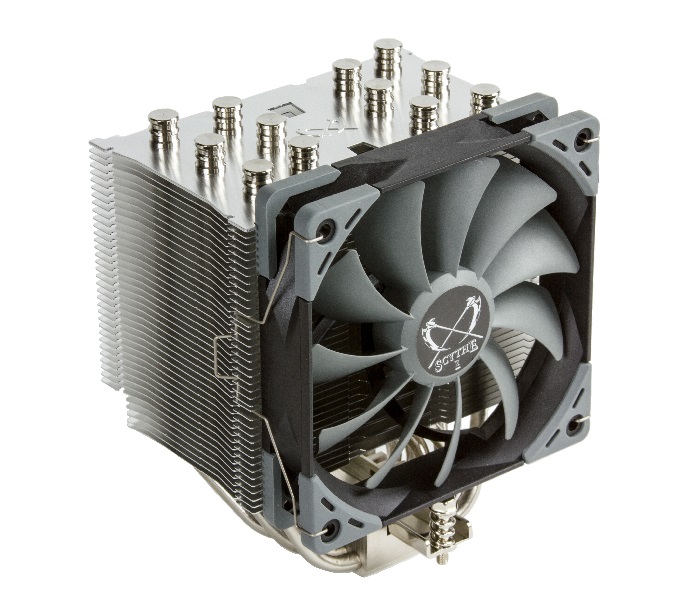January 2013.
That seems like quite a long time ago. In fact, that was pretty much 7 years ago. Certainly life was very different back then. That was the time I’d just built a new PC based around an Intel i5 3470 CPU and an AMD 5750 graphics card. Heady times for sure.
Here I am, seven years later looking to do another build, so yes, I feel like I got my moneys worth out of those parts, and as you read this, they are on an auction site, looking for a low end buyer. I did upgrade some parts in the mean time - I added a USB Asus U7 sound card in 2014 to address some bad audio interference I was hearing from the motherboard audio chipset, a new nVidia 1060 6GB graphics card in late 2016, and a new Samsung SSD in 2018. So what we’re really talking about is a new CPU, mobo, memory and boot drive; and a new monitor; and a new cooling fan.
What’s the new specification then?
CPU - I’ve moved from that 4 core / 4 thread i5 3470 from 2012, to a 6 core / 12 thread AMD Ryzen 5 3600 fresh out of the foundry. And yes, back to AMD!
What it doesn’t have is built in graphics, which is fine by me with the nVidia GTX 1060 6GB. The only time I’d used the i5’s built in graphics chips was for QuickVideo encoding in Handbrake and I’d been largely disappointed with the results. (The nVidia’s nvenc system is much better/faster but we’ll see how true that is, and most of these cater more to streaming than archiving video files).
From a electrical power point of view, the TDP will drop from the 77W of the i5, to the 65W from the Ryzen 5.
Memory - The new CPU needs DDR 4 memory rather than the DDR3 I had, so I’ll be sticking with Corsair but getting 2 sticks of 16GB of DDR4-3200 Vengeance. That’s 32GB total basically because video editing wants all your memory, and I often run virtual machines. I can also go up to 64GB+ if needed.
Mobo - I’ve had a solid run with ASRock, so I’m sticking with their Pro4 range, which I also have in my Linux server, and which I’ve used in builds for other people without issue. I’m also going for the ATX format and the midrange B450 chipset. I won’t need PCIe4 support or overclocking, but I do want a few more ports.
Drives -The 1TB Samsung 860 Evo SSD I bought last year is almost full since I migrated all my family media to this machine from the old Mac so I decided then to get a 1TB Silicon Power P34A80 NVMe drive as a boot/apps device, and keep the Samsung SSD for that family media. It bolts nicely to the mobo and doesn’t seem to have any heating issues.
Hang on, if it worked before, then why upgrade? Essentially it comes down to desire for better performance in some key areas:
- Video (and audio) editing. I’m no longer doing 720p/30fps editing, but at least 1080p/60fps and often higher framerates or 2.7/4K, and in HEVC, which wasn’t even supported by the i5, and this area will take as much resource as it can get. Also, some of the effects and such I’ve started getting into positively chug on the i5.
- Virtual Machines: VMs, like all machines, do benefit from cores and RAM, so let’s give them more cores and RAM.
- Games: Not really a huge driver for me, but there were some games which I wanted to play whose minimum spec was above my old 3470.
- Others: I do a lot of media grunt work on the machine - ripping and encoding media, doing massive copies and file manipulation, and now and then some 3D bits. Not critical, but more resources aren’t going to hurt.
The Main Build
I’m going to keep using my old Fractal Design Define R4 case. It’s heavy and chunky, but dampens sound leakage pretty well and will be able to house all of the new components without any trouble. As it sits on a bit of wood on the floor under my desk I don’t really think about it space-wise, and it acts as a nice shelf for my mic interface.
First off then was taking the old machine to pieces. I usually clean out the inside of the case every few months anyway, so there wasn’t too much dust and dirt in there, but because I want to sell these old components on, I gave them a special clean and placed them in antistatic bags. This left an empty void in the box with all the straggling power and hard drive cables. The cabling though I did want to make some changes to though - for reasons I don’t remember two bundles were running over the board when they could be placed in the void under the board and routed back up, so I did that whilst I remembered. This looks tidier, which is kind of irrelevant since you can’t see inside a black metal box, but mainly as it would help airflow.
The new mobo is full ATX sized, so there’s plenty of space for me to get in there with my sausage-like fingers. The 2 sticks of 16GB DDR4 memory was as simple to slot in as you’d expect, as was my first ever installation on an M2 NVMe drive. Tiny, and east to screw down.
I inserted the CPU and locked it into the AM4 socket, then removed the plastic mounts on the board to allow the stock heatsink to be mounted. It was simple; I wish it had always been this simple. Heatsink mountings are so much simpler than they used to be. Years back it seemed to be a competition as to whether you could get some sprung lever in place before the edge of the sink took a chunk of your hand out. Now though I just took the Wraith Spire (which oddly has an exposed thermal pad on the base), placed it on the CPU and screwed the 4 screws through the motherboard to the backplate. Very simple and seemingly secure. That said, once it’s in, I couldn’t move the RAM, so there’s that to consider.
Once that was on I screwed the whole assembly down into the case, to finish getting things in. Next in was my 1060 nVidia/Zotac graphics card, which was as simple as they are, getting it in the slot, and wedged correctly against the rear of the case, before screwing both verticals down.
Lastly was the cabling. As I noted, I’d re-routed some cables, and since most motherboards broadly have connectors in the same places now, it wasn’t too difficult to hook up, even power lights, reset jumpers and such. Next it was time to get Windows back on it. This was the only place it didn’t really go according to plan.
Before eventually powering down the old machine, I double checked that it was showing as a ‘device’ connected to my Microsoft account, so that even after the mobo replacement, I should still be able to activate against it. I’d already downloaded the current Windows .iso via the Media Creator, and burned it to a USB stick. Ready to go.
It booted! Yay! It installed! Yay! I installed the basic motherboard and graphics drivers. All good. Yay!
Being a good person, I went to activate it. It wouldn’t activate.
I tried to tell it I knew it was largely new hardware, each time it would come back and tell me it couldn’t activate it at this time in place of the old device licence and to try again later or perhaps buy a new copy of Windows 10 from the Microsoft Store (for 19,000yen, or 133GBP or 175USD). Seems expensive.
I tried later. No joy.
I searched interweb pages. No joy.
I tried an MS Support chat bot, no joy, even when I tried to bribe it with pizza delivery.
Finally I did the call back to Microsoft and spoke to a human. I promptly got disconnected when the rep said he suddenly couldn’t hear me. I tried again.
The second support rep was helpful, and didn’t seem remotely surprised with my issue: a license from aeons past (Windows 8, bought legitimately from Amazon Germany), upgraded for ‘free’ to Windows 10, then moved from one motherboard build to another, and not activating. His first real question: did I have the Windows 8 product key?
Amazingly I did, though I had no idea why I’d need it. As instructed I then ran slui.exe and entered the product key and voila, activated.
Yes, I activated my MS account linked Windows 10 machine against a Windows 8 product key.
Following this, I got down to the business of copying my profile back on to the new NVMe drive and moving quite a lot of other data around the newly re-connected drives. All good.
Then it was simply a case of reinstalling the apps I wanted.
Followup 1: New monitor
I’d toyed with just using my existing and ancient Iiyama 24" Prolite, and adding a second similar screen. In the end I moved the monitor as a second monitor for the laptop, and bought a 34" Ultrawide MSI Optix. So far I like it; no line where two screens would join and the colour reproduction is far better than the old Iiyama’s TN panel.
Followup: New Cooling
I was looking to replace the CPU stock cooler - the Wraith Stealth - in my original plan, but I thought I’d give it a couple of months with the stock unit.
The unit runs quite warm as you’d expect - it’s a stock unit for stock workloads - around 45degC for normal desktop work. It wasn’t noisy as such, but when I would use the machine for heavier loads such as media editing and some light gaming, the fan did get audibly noisier, but more importantly, or should I say, annoyingly, it would start to whine a little, which would then go up and down in pitch, which was actually distracting.
As I like my PCs to be quiet, I went for a third party solution, and had decided to go with a quiet air cooled solution. On my last 2 machine builds (a while ago now to be fair) I went with Scythe Shuriken 2 Rev B heatpipe/fan coolers, which are quite short and fairly quiet under load. This time I went for another of Scythe’s units, the heat pipe and tower/fan Mugen 5 Rev B..


It’s a tall unit, but the mounting instructions were very clear and it comes with all the mounting equipments required, so installation of the tower and fan was quick and simple. Despite being much taller than the stock unit, it’s designed to have more clearance, and it does - I can still access all RAM, which is more than I could with the stock unit which just cleared the first two sticks of RAM, and they’re simple sticks, no LEDs or coolers.
Since I had the box open again I replaced the old case fan - a Fractal Design 140mm unit. It wasn’t noisy as such, but there was a definite whirring noise and it wasn’t PWM, so I swapped it out for a PWM Scythe Kaze Flex fan. Yes, I like the Scythe range - they’ve always worked well for me.
With it’s new fan and cooler the machine is even more quiet, even under load. Nice.
I expect this build to stay as is now for quite a while until a graphics card upgrade in a couple of years.